How to Choose the Right First Copy Luxury Watch (Beginner’s Guide – 2025 Edition)

Introduction
“Buying a first copy watch? It can either be a smart steal—or a total scam.”
The market for first copy luxury watches in India has exploded in recent years. Everyone wants that Rolex look without the Rolex price tag. But for beginners, choosing the right first copy watch can be overwhelming. With so many sellers, versions (AAA+, super clones), and prices, it’s easy to make the wrong choice.
That’s why we’ve put together this simple yet powerful guide. Whether you’re eyeing a Rolex Submariner, Omega Seamaster, or Patek Philippe, this post will help you avoid rookie mistakes and pick a replica you can proudly wear.
Let’s dive in—and help you buy smart, not sorry.
What Is a First Copy Luxury Watch?

I still remember the first time someone said, “Bro, it’s a first copy, not fake.” I was confused—wasn’t that the same thing? Turns out, first copy watches are like high-grade lookalikes, built to mimic the original luxury watches as closely as possible, but without being made by the brand. They aren’t licensed, but they’re a step above your typical street-side fakes.
Here’s what I learned after buying a few (some regrets, not gonna lie):
A replica can be anything from a basic lookalike to a rough knockoff. A first copy, though, usually means a better finish, working features, and sometimes even a Japanese or Swiss movement. Then there’s Super Clone and AAA+ terms sellers throw around—these are just ways to label the quality. Not standardized, sadly.
In India, they’re super popular because you can wear something that looks like a ₹10 lakh Rolex for under ₹10K. Just don’t confuse that with legal. It’s a bit of a grey area. Some countries crack down hard, but in India, most buyers and sellers operate quietly through platforms like Telegram or even local shops. Ethics? That’s personal—some folks see it as smart fashion, others call it stealing style. You decide.
Understand the Key Features That Matter
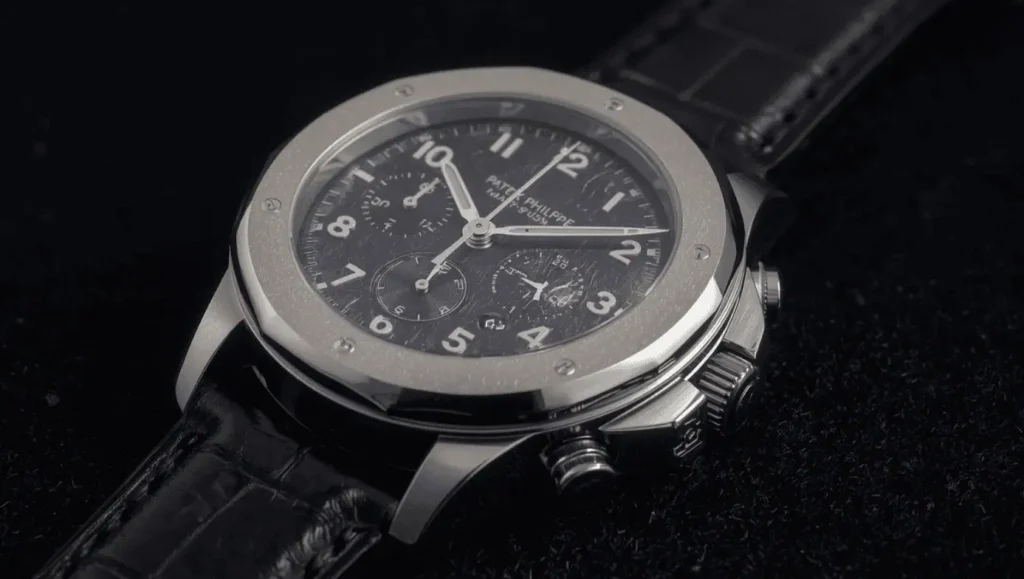
If there’s one thing I wish someone had told me earlier, it’s this: not all first copy watches are built equal—even when they look the same online. I once grabbed a beautiful-looking chronograph that had non-working subdials. Yep, they were just painted on. It looked the part, but functionality? Zero. That’s when I started digging into the real features that separate a good first copy from a disposable one.
Movement type is first—automatic vs quartz. Automatics usually cost more and have a sweeping second hand, but you need to wear or wind them. Quartz runs on battery, cheaper, but the tick-tick is a dead giveaway in some brands like Rolex. Depends on your vibe. If you’re not sure what suits you, check out our automatic and quartz watch collection.
Weight and materials matter too. A solid build should feel like the real deal—bracelet shouldn’t rattle, glass shouldn’t scratch on day two. Real sapphire glass beads water and feels smoother. Always check logo alignment, engraving sharpness, and font. If the ‘R’ in Rolex is off, it’s a no-go.
And don’t skip the functionality check—adjust the date, test the crown, push the chrono buttons. If they don’t do anything, walk away. A good first copy isn’t just about looks—it should
Decide on a Brand & Model That Fits Your Style
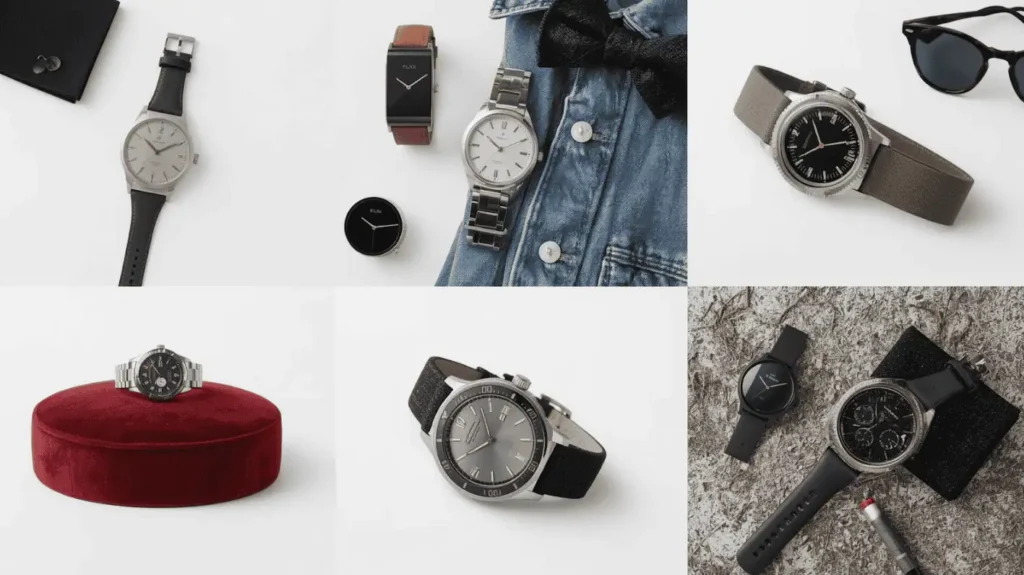
I used to think grabbing a Rolex copy was the default move—until I wore a chunky Submariner with a kurta at a wedding. Total mismatch. That’s when it hit me: style > brand. You gotta pick a watch that suits your vibe, not just one with the most clout.
If you like clean and formal, the Omega is sleek without screaming for attention. For something sporty and bold, the Tag Heuer Carrera lookalikes feel premium and fit snug on the wrist. I’ve also found Patek Philippe copies, like the Nautilus Skeleton, work great for people who lean modern but want a touch of heritage.
Casual? Fossil Royal Oak-inspired pieces are budget-friendly and stylish. Formal? Try a Tissot Le Locle or an Armani Renato. For straight-up luxury vibes, go AP Royal Oak or Hublot. If you are a fossil fan I have a full guide on fossil first copy watch that you must read before getting any of them.
At the end of the day, don’t just follow trends—follow what feels good on you. The brand might impress others, but the right model boosts your confidence.
Set a Budget (And Know What Price Buys What Quality)
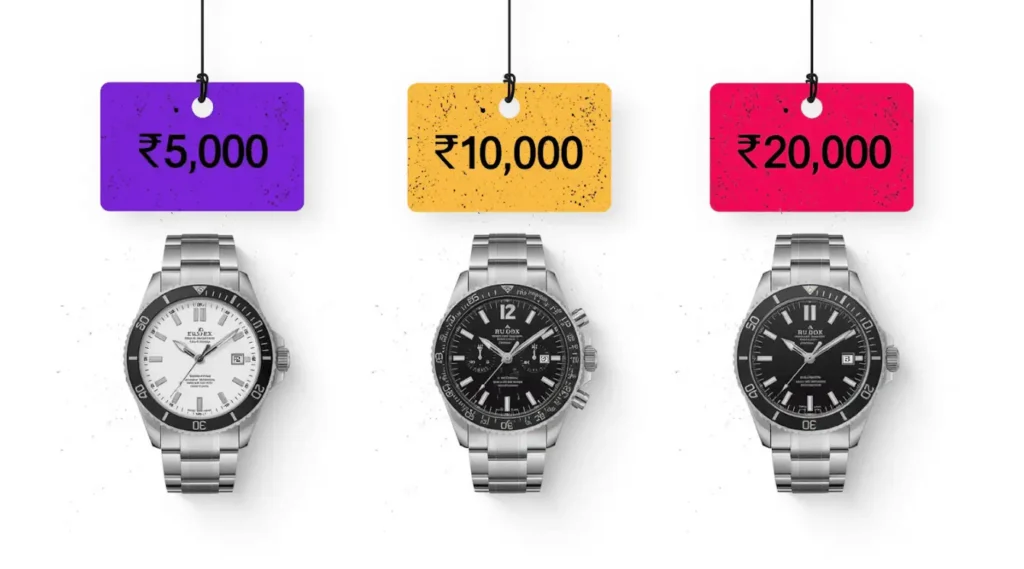
I’ll be real—I’ve overspent on a “premium” first copy that turned out to be a glorified paperweight. You really need to understand what different price ranges actually get you in the first copy game. Otherwise, you’re just paying extra for seller confidence and some shiny lighting in their photos.
In the ₹2,000–₹5,000 range, you’ll mostly find basic quartz models—think Fossil first copy , or simple Tag Heuer dials with no working chronograph. These are decent for casual wear but don’t expect weight or detailed engravings.
₹5,000–₹10,000 is where things start to feel real. You get AAA+ finish, better straps, and sometimes working date or subdial functions. This is perfect if you’re eyeing mid-tier brands like Tissot or Omega.
At ₹10,000–₹20,000, you’re in Super Clone territory. These often have automatic movements, engraved casebacks, and accurate weight. I got my Audemars Piguet Royal Oak in this bracket, and it still turns heads.
Biggest tip? Don’t fall for someone charging ₹12K for a ₹3K-tier watch. Always ask for movement specs, close-up pics, and real-time videos. That’s how you avoid paying luxury prices for basic fakes.
Where to Buy First Copy Watches (Safely)
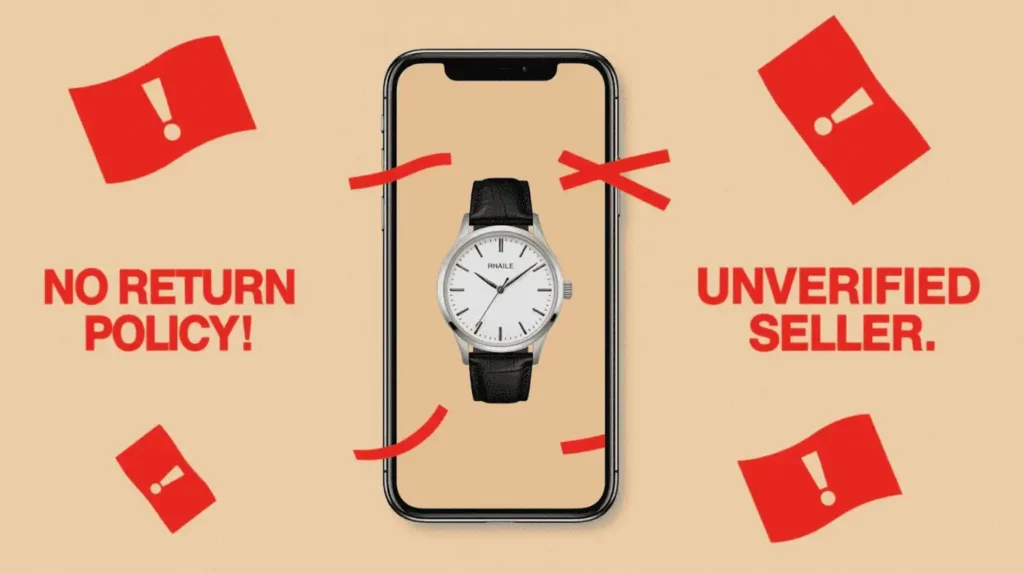
Buying a first copy watch isn’t rocket science—but it can feel like a gamble if you don’t know where to shop. I’ve had both wins and disasters. One time I ordered a “Super Clone” Rolex for ₹7,000… and got something that felt like it came from a cracker box. That’s when I learned: where you buy from makes all the difference.
If you’re going online, my safest bet so far has been watchtown. They list actual product photos, show details like movement type, and don’t ghost you after the payment—plus, they’ve got a return policy, which is rare in this scene.
Offline spots like Palika Bazaar in Delhi or Linking Road in Mumbai are hit or miss. You can bargain, sure—but check everything in person: the weight, crown, logos, and dial accuracy. Always ask for a demo.
Avoid sellers who refuse product videos, offer no returns, or push “today-only” deals. And don’t skip checking reviews or Telegram feedback groups—that’s where the truth lives.
✅ Checklist Before You Buy (Beginner Safe List)
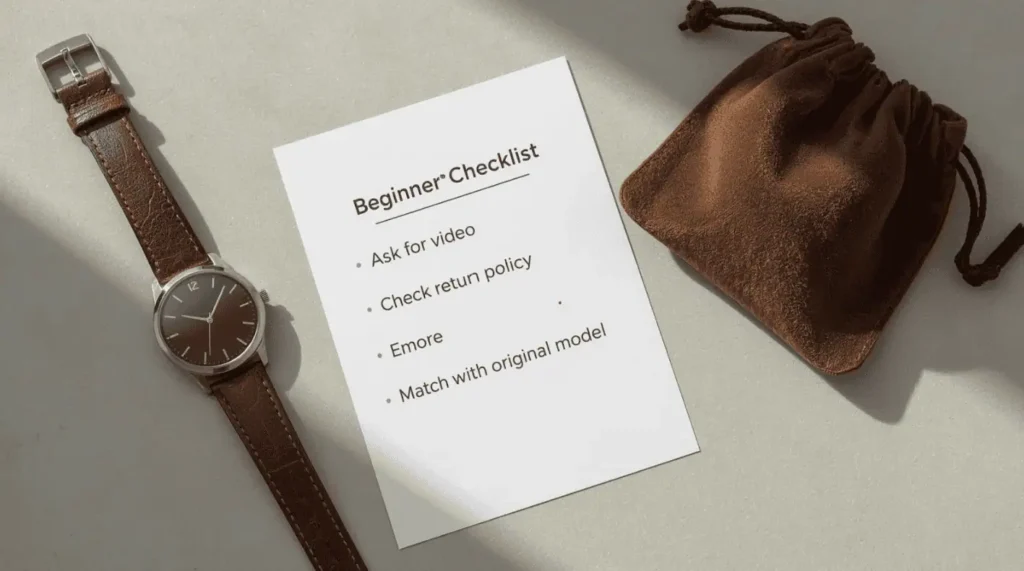
When I first got into first copy watches, I went in blind—and yeah, I paid the price. Literally. The watch looked great in pics, but when it arrived, the crown was loose, and it made a weird clicking sound every time I moved my wrist. Since then, I follow a strict “safe list” before I even think about hitting that Buy Now button.
- Ask for a live product video. Not a stock video or some YouTube clip—your actual watch. If they refuse, run.
- Check their return policy. I only shop from places like watchtown where they clearly list returns and warranty terms.
- Match product images with the original model. Look up the real version on the brand’s website—compare fonts, dial layout, even the hands.
- Use side-by-side reviews. Reddit, YouTube, or even Telegram groups often have user comparisons that help spot flaws.
- Always ask what movement it uses. If they say “Swiss” but it ticks like quartz, it’s not what they’re claiming.
- Look for social proof. Genuine sellers usually have solid reviews, real customer photos, and active chat groups.
This list has saved me (and my wallet) more than once. Stick to it and you’ll avoid 90% of the bad deals out there.
Conclusion

If there’s one thing I’ve learned after a few good buys—and a few embarrassing ones—it’s that picking the right first copy luxury watch is part instinct, part research. It’s not just about flexing a logo; it’s about knowing what you’re paying for and why it matters. A well-made replica with a working movement and solid build feels just as satisfying (sometimes more!) than dropping a lakh on the real thing.
Start simple. Maybe a Rolex GMT Master II or a clean Tissot. Stick to sellers who show you the watch, offer returns, and care more about quality than fake hype.
This beginner guide? Keep it handy. Read it twice. Trust your eye, ask questions, and never rush. With a little patience and smart choices, you can rock a timepiece that looks premium, feels premium—without torching your bank account.